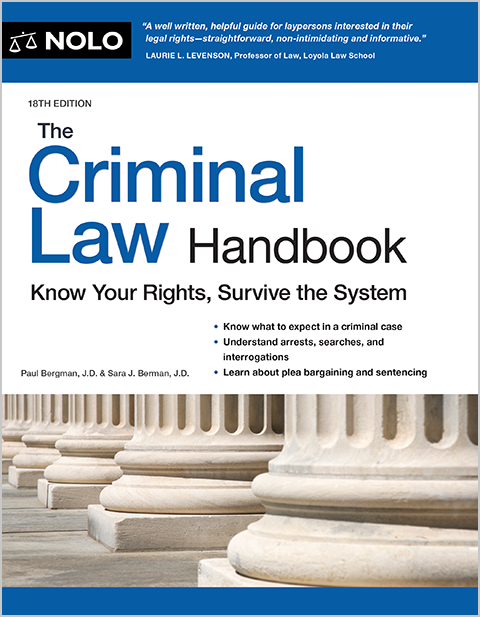If your cerebral palsy causes difficulties that are severe enough to keep you from working full-time for a year or more, you may qualify for disability benefits.
Cerebral palsy (CP) is a group of nervous system problems that are present from birth or soon after birth. CP is caused by damage to the brain during development and can cause problems with walking, using the arms, behavior, speech, hearing, seeing, and thinking.
There are several types of cerebral palsy:
- spastic (characterized by stiff, jerky muscles)
- athetoid (characterized by muscle problems and slow writhing movements)
- ataxic (characterized by poor balance, coordination, muscle tone, and tremors), or
- mixed (a combination of the above).
Some adults with cerebral palsy may experience a lack of coordination and mild speech problems, and perhaps an unusual gait, but not much else, while other adults suffering from CP are unable to walk, coordinate the use of their hands, speak effectively, or hear properly.
If the difficulties caused by your cerebral palsy are severe enough to keep you from working full-time for a year or more, you might qualify for disability benefits.
Can I Get SSDI or SSI for Cerebral Palsy as an Adult?
While many adults who get disability benefits qualified as children for SSI under cerebral palsy, it's not unusual for an adult with cerebral palsy to be applying for disability benefits for the first time.
Adults with cerebral palsy may be eligible for Social Security Disability Insurance (SSDI), which is for workers who paid taxes into the Social Security system (or for people whose spouses paid into the system), or Supplemental Security Income (SSI), which is for people with low income and assets.
To qualify medically for SSDI or SSI, an adult's cerebral palsy has to seriously limit activities like walking or talking. The Social Security Administration (SSA) keeps a list of severe conditions that the agency considers to be disabling, if you meet the criteria in the "listing of impairments." The SSA's official disability listing for cerebral palsy describes the limitations that your medical records need to show that your disorder is especially severe. If you can "meet the listing," you can get benefits without needing to prove that you can't do any jobs.
If your CP doesn't meet the SSA's listing for cerebral palsy, you still might be able to get disability benefits based on a "medical-vocational allowance." You'll need to show that your cerebral palsy reduces your capacity to work so much that there are no jobs you can do, considering your education, your prior job experience, and your age (more on this below).
How Can I Qualify for Cerebral Palsy Under the Official Listing?
Social Security sets out what's required to be granted disability benefits for cerebral palsy in disability listing 11.07. You must have a diagnosis of cerebral palsy plus a detailed description from your doctor of one of the following:
- Significant limitations in communicating due to speech problems (such as dysarthria or aphasia), vision problems (such as strabismus or hyperopia), or hearing problems (such as sensorineural hearing loss).
- The inability to control the movement of at least two of your extremities (either an arm and a leg or two arms or two legs). This means that you must have extreme difficulty in the ability to use your arms, to balance while standing or walking, or to stand up from a seated position.
- A mix of serious physical problems and cognitive or behavioral problems. Specifically, you must have "marked" (seriously limiting) physical problems along with a marked limitation in one of the following:
- thinking (understanding, remembering, or applying information)
- interacting with others (social problems)
- finishing tasks (problems with concentration, persistence, or completing tasks quickly), or
- regulating emotions, making good decisions, and adapting to changes.
Difficulty Communicating
If you have significant difficulty communicating with others because you're hard of hearing, have a significant speech impairment or impediment, or have poor eyesight or vision problems, you may be able to fulfill this section of the listing and be approved for benefits.
Problems Using Your Legs or Arms
If you're unable to walk independently without crutches, braces, or someone else's support, you'll likely fulfill the second section of the listing, even if you can move around your home without support.
If you're unable to use your hands or arms to reach, push, pull, lift, carry, grasp, and/or hold onto small items, you would also fulfill the second section. But if you can write with a pencil or cook food and feed yourself, it's not likely you'd be considered unable to use your arms effectively.
A Mix of Physical and Cognitive or Social Issues
If you have some serious but moderate physical problems as well as issues with understanding information, interacting with other people, focusing on tasks, or adapting to changes, you may fulfill the last section of the listing.
If you have trouble understanding, remembering, or applying information, the SSA will look for the results of an IQ test in your medical record. If you don't have IQ test results, the SSA may arrange for an IQ test.
If you have emotional or social problems such as destructiveness or emotional instability, Social Security will likely send you to a "mental status examination," unless you've already seen a psychologist or psychiatrist and you have adequate psychological records in your medical files.
How Can I Prove I Can't Work If I Don't Meet a Listing?
If you don't qualify for disability benefits under the listing for cerebral palsy, Social Security is required to consider the effect of your impairments on your ability to perform routine daily activities and work. The agency will review your medical records and the activities of daily living that give you difficulty to determine your residual functional capacity (RFC).
Your RFC describes what you're able to do, physically and mentally, despite your limitations. Social Security uses your RFC to decide whether your limitations prevent you from doing jobs you've held over the past five years or any other full-time work. The worse your symptoms are, the more limitations you'll have in your RFC, and the fewer jobs you'll be able to do.
For more information, see Nolo's article on getting disability through a medical-vocational allowance.
How Much Disability Can I Get for Cerebral Palsy?
Social Security doesn't set your benefit amount based on your condition or how severe it is. Instead, your SSDI check amount will be based on your work history and earnings. You can receive up to $3,822 per month, but the average check is only $1,537 per month (in 2024).
For SSI, you can get a maximum of $943 per month in 2024, but your SSI check amount will likely be less. Social Security will subtract any countable income (including free room and board) you earn each month. Also, some states offer supplemental payments for residents who receive SSI, which can increase your monthly payment.
Applying for Disability Benefits for Cerebral Palsy as an Adult
You can apply for disability benefits online using the SSA's web portal. If you'd rather apply in person, to get assistance filling out the application, call the SSA at 800-772-1213 to set up an appointment to submit an application through your local SSA field office.
After you submit all the necessary medical and financial information to the SSA, a claims examiner will request your medical records, review them with a medical consultant, and make a decision on whether you're entitled to disability benefits. It can take four to seven months for the SSA to determine whether you're eligible for disability benefits.
If you need to apply for SSI for a child with cerebral palsy, the rules are different; see our article on how children with cerebral palsy can qualify for disability benefits.

